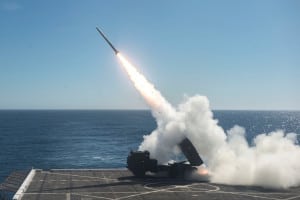
ANNAPOLIS, Md. -- The Marine Corps is finding ways it can contribute to a sea-based fight while aboard Navy ships instead of simply being ferried to a land-based fight by the sister sea service.Marine rockets and other long-range fire capabilities can be brought to bear on sea- and land-based targets from the deck of the amphibious ships that transport them to war zones, said Lt. Gen. Brian Beaudreault, Marine Corps deputy commandant for Operations, Plans and Strategy."Long-range systems, whether that's…

 By
By 











